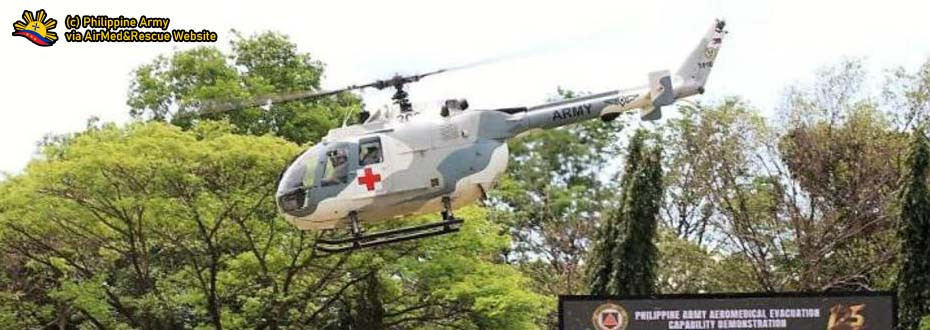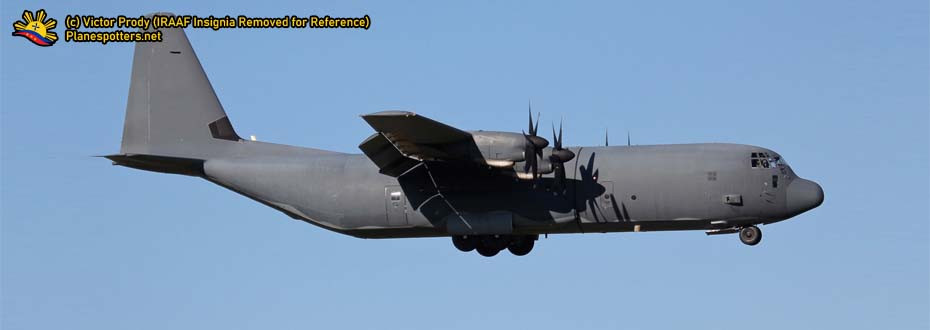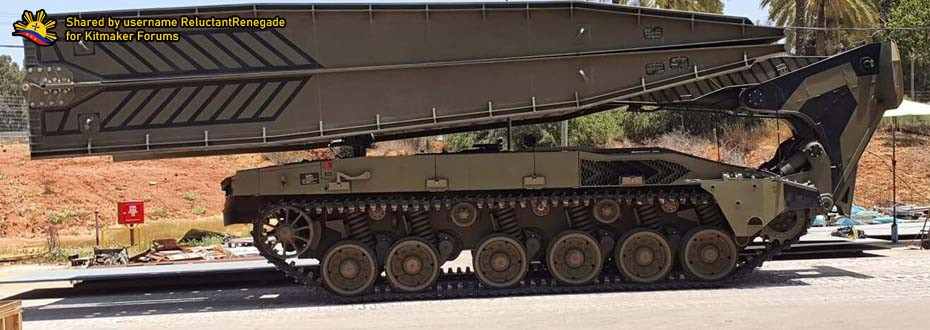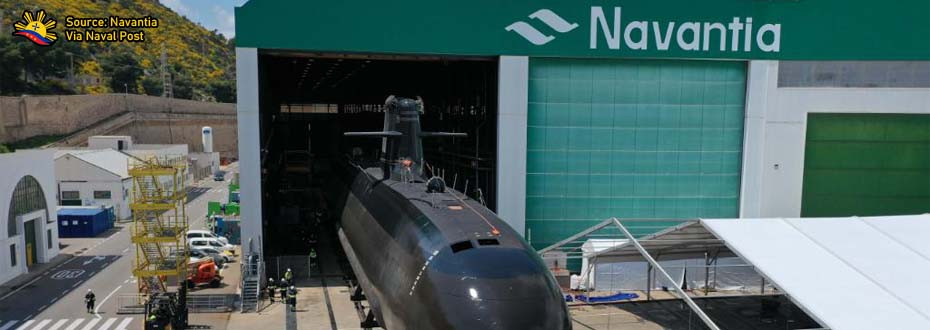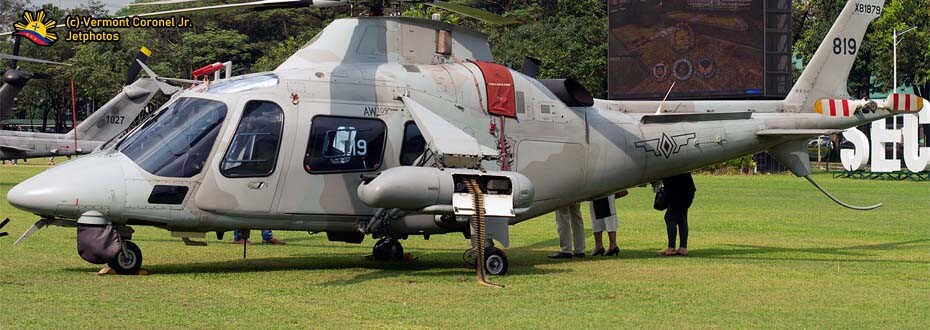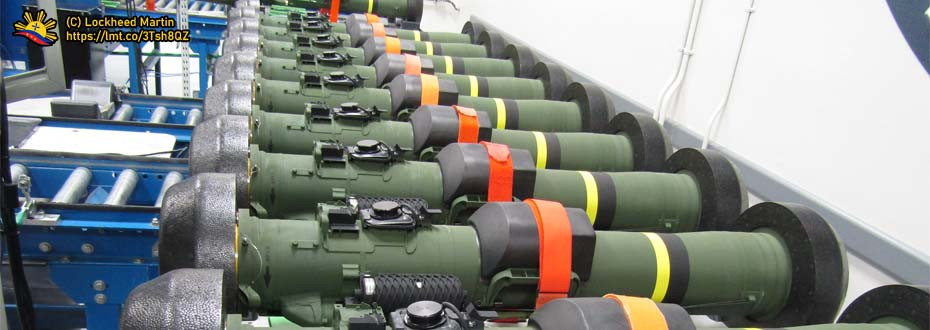And with it comes an idea of providing pools of aspiring pilots more tools that will help enhance their skills in handling flying military assets which may help push the military branch's capabilities to the better, getting the sophisticated assets performing on their full potential from highly-skilled personnel.
AN OVERVIEW ON TRAINER AIRCRAFTS
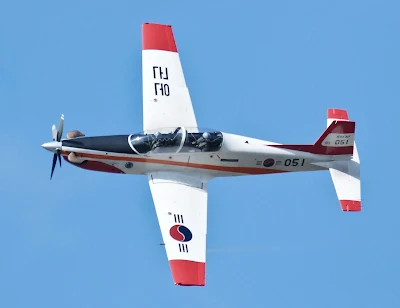 |
| This is an aircraft produced by Korean Aerospace Industries, the same manufacturer of the FA-50PH that the Philippine Air Force obtains. |
That includes the procurement of additional trainer aircraft which may provide the foundation for the Air Force's future pilots that will handle its sophisticated and formidable tools that will go hand-in-hand in performance and expertise needed especially if needed on combat situations that the country may partake, both internal and external ones that matter a lot for national defense.
Currently, the Philippine Air Force obtains a handful of SIAI/Marchetti AS-211 Basic Jet Trainers and SIAI/Marchetti SF-260 Light Trainer Aircraft, of which its variant also came with an attack variant such as the SF-260TP that the 15th Strike Wing obtains along with its fleet of OV-10s, AW-109s and soon-to-have Jordanian-donated AH-1s in its inventory, with the A-29 Super Tucano being the latest addition on their array of air assets.
These platforms are aging with the necessity of replacing these platforms is getting more important as time passes by. It is here that new military assets are being considered with the number of suppliers taking the interest to get a share of the Philippine defense market, especially within the Armed Forces of the Philippines.
On this discussion comes a supplier from South Korea which is also the one who supplied Philippine Air Force its Lead-in Fighter Trainers which can be also be considered as light combat aircraft that serves as an interim/step platform before the Multirole Fighter Jets on the process within the military branch. This is Korean Aerospace Industries' KT-1 Woongbi Trainer Aircraft.
KNOWING THE KOREAN AEROSPACE INDUSTRIES
 |
| A work-in-progress FA-50 unit which is intended for the Philippine Air Force in the foreground. Image Source: KAI via Flickr. |
Before we proceed, it is ideal to read these articles which include the products made by this Korean defense company:
- "The Idea of Having KUH-1 Surion Combat Utility Helicopters in the Philippine Air Force", written July 9, 2017
- "Upgraded FA-50PH Jets for the Philippine Air Force?", written April 05, 2019
- "The Role of FA-50PH as Both Trainer and Light Fighter", written December 01, 2016, and
- "The Idea of Having BVR features in an FA-50 Lead-In Fighter Trainer Jet", written January 31, 2019.
The company was founded in 1999 after the 1997 Asian Financial Crisis in which revolutionizes the Korean defense industry especially with regards to aerospace matters at the turn of the century in which they produce a handful of military aerospace products, with several exported to several countries such as the Philippines.
Since then, it produces many aircraft that bolsters the Republic of Korea Air Force's capabilities to the extent that improves its self-reliance on the production of its aerospace assets in a sense that the local economy benefited from the developments being made in the country's defense industry as well as giving that needed support on sustaining its operations particularly in terms of their own aspects on maintenance and repair matters.
It is known that the company, Korean Aerospace Industries, at one point participated in the Philippine Air Force's Combat Utility Helicopter Acquisition Project as it offered the KUH-1 Surion Combat Utility Helicopter (see link above) on what might be the first export of such a product on a certain country, although it lost over the Sikorsky's offer that involves the delivery of 16 units of the S-70i Sikorsky Black Hawk Helicopters.
Meanwhile, it successfully secured a deal for the Philippine Air Force's Lead-in Fighter Trainer Jet Acquisition Project, of which it produced a squadron of FA-50PH (see links referenced above) that helps regain its jet capability since the F-5 A/B jets decommissioned fifteen years ago on 2005. Such a fleet of aircraft may get expanded later on as there is a prospect of adding these jets up as well as getting several units upgraded along the process.
These things are a reference regarding the Korean Aerospace Industry's performance on pitching its aircraft on the local Philippine Defense Market as they lost one project while they gain more on another. Their record on providing FA-50PH lead-in fighter trainer/light combat aircraft to the Philippine Air Force is something that may help them pitch their product for the country's basic trainer program.
SOME INSIGHTS THAT SHEDS LIGHT OVER THIS TOPIC
The prospects regarding this topic point out from a private defense group shown above, with the reference coming from a South Korean source that posts interesting data about South Korea's involvement through cooperation over the Philippine Air Force's Training Aircraft Acquisition Program.
For the entirety of that thread's conversation, kindly check the webpage screengrab in a link provided here which also came with several comments that shed insight regarding this development that correlates to the main point of the discussion covering the topic on this article.
It is here that the rationale relating to this topic of having KT-1 Woongbi as one of the candidates of the trainer aircraft project arose in which there goes the correlation regarding the Philippine Air Force's desire for cooperation with their South Korean counterparts for the Trainer Aircraft Acquisition Program.
From the main post down to the thread as provided in the linked screengrab, one may simply have an idea that it all points out to the KT-1 Woongbi being an option for the project that involves the procurement of Training Aircraft which in itself as a consideration among other prospective offers on the program.
Such development may mean a lot regarding the relations between South Korea and the Philippines especially that the former already provide much of its produced military assets to the country in such a manner that in the investment that the latter provided, they gave the tools that are needed for country's continuous development especially in the field of defense.
Hence, this development may provide an idea regarding the development of one of the projects that the Philippine Air Force pursues in which it matters on their capabilities which includes enhancing the skillsets for the pilots to have, along with the tools and military equipment that is being procured that makes a job done in terms of protecting national aerospace.
ON THE AIRCRAFT'S DEVELOPMENT AND SPECIFICATIONS
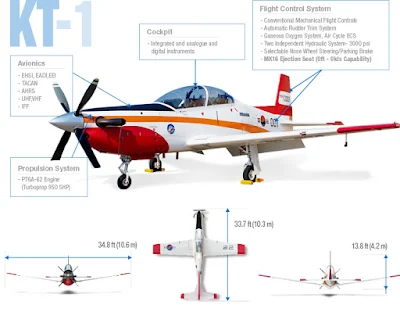 |
| Subcomponents and dimensions that define the KT-1 Woongbi. Courtesy of Korean Aerospace Industries website. |
MTOGW: 5,600lb (2.54t)
Empty Weight: 4,210lb (1.91t)
Power Plant: 950hp (max 1,150hp)
Max Speed: 350kt (648km/h)
G-Limit: -3.5/+7.0kg)
The development of this aircraft precedes that of the formation of the Korean Aerospace Industries as a current South Korean defense industry specialized in aerospace technology wherein it started its maiden flight eight years ago before such a formation, in the year 1991 that came at the end of the century.
Speaking of development, it started in the year 1988 in which South Korea seeks on having its first indigenously-developed aircraft wherein this was initiated by the South Korean Government's Agency for Defense Development or ADD together with the forerunner of the Korean Aerospace Industries which was considered a joint venture between South Korean companies through their aerospace divisions.
The first orders for the aircraft took place in 1999 of which the Republic of Korea Air Force (ROKAF) procured around 85 units plus another option for 15 units in which it rendered its service at the turn of the century, making the aircraft reputable within the South Korean military for the next two decades as well as paving the way for the Korean Aerospace Industries for improving its expertise more in terms of indigenously producing its aircraft.
Having these aircraft within the fleet of South Korea's Air Force means a lot for the country's pool of pilots that hones their skills further as such learning may also go augmented with other trainer aircraft that the Korean Aerospace Industries also produces such as the KC-100 "Naraon" basic trainer aircraft as well as the T-50 Golden Eagle in which the Philippine Air Force FA-50PH was based upon.
Aside from the Trainer-type Woongbi aircraft, the Republic of Korea Air Force also obtains a different variant of the KT-1 which in itself is armed with 12.7mm guns and LAU-131 Rocket Launchers which is the KA-1 Woongbi combat aircraft, although a far cry from the capabilities provided by an A-29 Embraer Super Tucano Close Air Support Aircraft that the Philippine Air Force may soon be having in its inventory.
These details are something that will set the foundation on the idea of having KT-1 Woongbi trainer aircraft that the Korean Aerospace Industries produces in the manner that another country like the Philippines may have such platform considered for its pool of pilots on its Air Force to hone more knowledge dealing with the skills needed on its operation.
ON THE OTHER PROPELLER-BASED AIRCRAFT THAT PAF OBTAINS
 |
| The Philippine Air Force obtains the SIAI/Marchetti SF-260 propeller aircraft as its own basic trainer platform for pilots to hone basic skills of flying. Image Source. |
It is with that portion that the Air Force obtains a handful of SIAI/Marchetti SF-260 propeller aircraft which serves the organization through the years, providing the platform that an aspiring pilot may have for them to get on another step of getting the proficiency of flying more sophisticated aircraft along the way, ranging from Close-Air-Support aircraft to speedy multirole fighter jets.
Regarding this aircraft in the Philippine Air Force, it was purchased in the early 1970s wherein they procured 46 units of such aircraft which was divided into two variants, naming the SF-260Ms which are the military trainer aircraft that came with 32 units with the remaining 16 units being the SF-260W variants that are the tactical support version which is capable on conducting basic close air support operations.
It is worth taking note that the Philippine Air Force also have several of such aircraft converted into what is currently known as the SF-260TP variant wherein 18 units from the 46 delivered were upgraded under project "Layang", with its engines upgraded into the Allison Model 250 now currently known as the Rolls-Royce M-250 Turboshaft along with its capability of carrying more munitions (now up to four hardpoints from the original two) which makes it a more capable close in support aircraft.
Hence, this setup is something that helps the Philippine Air Force coping its capabilities up until the point that newer assets such as the A-29 Super Tucano coming in for the Close Air Support platforms while the propeller-based aircraft trainers may go augmented with the ones like the candidate for the project like the Korean Aerospace Industries KT-1 Woongbi.
TO SUM IT UP
 |
| A Peruvian Air Force KT-1 Woongbi aircraft. Courtesy of Wikimedia Commons. |
Let it be noted that with five countries currently using these aircraft (South Korea, Indonesia, Peru, and Turkey with additional orders from Senegal) makes it eligible for consideration, as well as having an assurance regarding the sources needed for spare parts especially in the case of the Philippines where it may benefit from neighboring Indonesia regarding this option.
Moreover, this development may help bolster the ties between both countries together especially in defense cooperation given that the South Koreans have already provided much of its produced military equipment which was produced at a number by several of its Defense Industries through the deals that benefit both the supplier and the end-user on their respective ends.
With the SIAI/Marchetti SF-260 basic trainer aircraft currently in service within the Philippine Air Force aging older which connotes increasing cost on its upkeep, perhaps this consideration may mean a lot for the service branch wherein they may have it augmented by these type of aircraft and eventually, replacing them along the way in a sense that it drives cost for maintenance and other operating expenses down.
Nevertheless, it remains to be seen regarding the developments of this option that involves the KT-1 Woongbi wherein developments that covers the Modernization activities of the Armed Forces of the Philippines may change along the way as factors ranging from economic output to internal decision-making affecting these setups for planning in the long run.
Despite these things, the purpose still goes the same as the Armed Forces' desire to increase its capabilities wherein they also need training platforms that are meant to hone the skills of any aspiring personnel that may help them execute their actions that render such capability utilized at its utmost potential.








